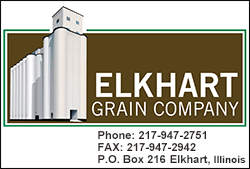|
Opioid Task Force learns details
of new Noxalone tracking program
 Send a link to a friend
Send a link to a friend
 [August 18, 2018] [August 18, 2018]
LINCOLN
The Abraham Lincoln Memorial Hospital Community Health Collaborative
Opioid Task Force met on Thursday August 8th. The meeting was an
opportunity for the various subgroups within the task force to offer
updates on the work they are doing to deter the use of opioid based
drugs within Logan County.
The task force is utilizing a four pillar approach that includes but
is not limed to prevention, education and treatment.
During the meeting the group heard from task force member Lincoln
Fire Chief Mark Miller regarding a new program he is utilizing to
track the usage of Noxalone or Narcan within the county.
Noxalone, also known as Narcan, is used when a victim is unconscious
from an opioid overdose. The drug is safe and easy to administer and
will quickly revive the overdose victim. Afterward, that person
still needs to be transferred to a hospital for additional
treatment, but the Narcan buys valuable time for the victim and is a
proven life safer.
At recent meetings, the task force has discussed the use of the drug
and wondered if there was a means to determine how often it is being
used and how often it can be credited for saving a life. Miller
volunteered to research how to create a tracking system for the use
of the drug.
At the August meeting, he reported that he now has a good tool,
thanks to attending a Mutual Aid Box Alarm System (MABAS) meeting.
MABAS allows Illinois fire departments to share equipment and
services easily. The program also permits networking of the fire
departments and opportunities to discuss issues in their communities
and come up with best practice procedures.
Miller explained that statewide, MABAS members are taking an
interest in the use of Narcan and how to track it. At a recent
meeting the group learned of an overdose mapping program that is
being used on the East Coast. Miller said after that meeting he did
further research and was able to easily get the program and began
using it last month.

He said the program offers a number of features. The procedure will
be that when Narcan is administered, the first responder will report
it to Miller. Miller will then input data into the program to create
a permanent record of the use of the drug.
In the program, Miller said the information input will include the
age of the victim, address where the incident occurred, and if the
incident was “fatal” or “non-fatal.” He said there will be no names
input into the report. The addresses however he said had additional
value because those addresses are then pinned onto a map within the
program. He can then print a map that shows clearly where the drug
was used, which also indicates where drug usage is prevalent within
the community. Miller said that map will be very useful in a ‘big
picture’ sort of way.
[to top of second column] |

Miller handed out copies of the first 30-day report, showing that the
information collected indicated there had been 11 instances where Narcan was
administered. Of the 11, there were no fatalities, though Miller said there was
once incident where he saw it as simply amazing that it was not fatal. He
described the scenario saying that the victim had been unconscious and the first
dose of Narcan did not work. He said that the second dose was administered and
it did work to a certain degree. The patient was transported and came close to
death again in the ambulance. At the hospital the victim was given medical
treatment, and for quite some time it was touch and go, but he said the patient
did come out of it.

Miller said that in the report, one surprising development was the age of the
victims. He said that several of them were beyond the age of 50.
He also noted that it was sometimes shocking to see what people will do to get
the drug they need. He noted arriving on scene at one call where the person had
seven Fentanyl patches on the body and was actually eating one.
Miller’s comment about the Fentanyl prompted the question, are we seeing an
increase of that drug in Logan County. Fentanyl is deadly and much more
dangerous than even Heroin and Cocaine. The odds of fatality with this drug are
much higher than any other opioid based drug available.
Miller said that he doesn’t see a lot of Fentanyl. He noted in Lincoln the
recent cases had included three heroin and one unknown substance. He said that
it isn’t always possible to know at the scene what the drug is. So the term
unknown substance is used.
Miller was asked about the procedure for administering the drug. He noted that
Narcan does not harm a person in any way, so it is safe to administer whether
there is an opioid involved or not. Regarding procedure, he said when the victim
cannot speak for themselves and it is unknown what is happening, the first
response is to check for a diabetic cause. If there are no indications that the
person is having a diabetic reaction, then Narcan is administered.
Miller said that he will be the sole person responsible for the reporting
program and he is working with his department, city police, Logan County
Paramedics, and the Logan County Sheriff’s Office to get everyone accustomed to
filing reports with Miller.
The reports will be made available on a regular basis to the task force.
[Nila Smith] |